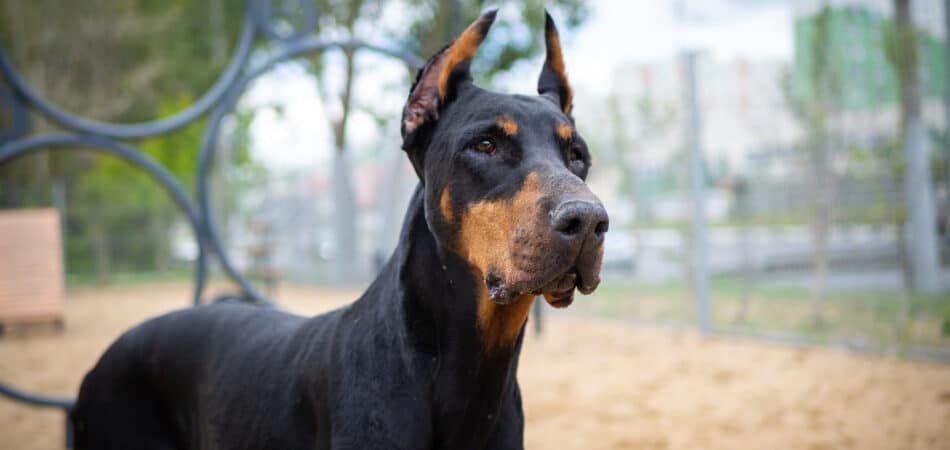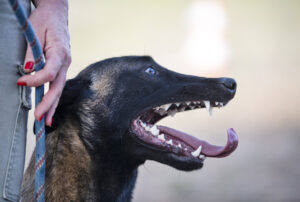






Earlier this week, I watched a K9 handler work his dog, a powerful, well-trained Belgian Malinois. The dog was obedient, precise, and everything you’d expect from a high-level protection canine.
But something was off. His movements were sharp but not eager. His responses were correct but not enthusiastic. He did what was asked, but there was no fire behind it.
It hit me then: this wasn’t a training issue. This was burnout.
We don’t often think about burnout in dogs the way we do with people. Humans get exhausted, emotionally drained, and disengaged after prolonged stress.
But a guard dog—an animal bred and trained for vigilance—can suffer from the same thing. And when they do, the consequences can be serious.
So, what does burnout look like in a guard dog? And more importantly, how do you fix it?
Let’s start by understanding the signs.
Research on working dog welfare shows that burnout doesn’t happen overnight; it builds up slowly from prolonged physical and mental demands. It creeps in subtly, hidden behind routine and duty.
At first, the changes are easy to miss. Your dog might take a little longer to respond or seem less eager to work.
But over time, the signs become harder to ignore.
 A well-trained guard dog thrives on purpose. They want to work. If your dog suddenly seems uninterested in training, hesitant to engage in protection drills, or indifferent to commands they once executed with excitement, that’s burnout speaking.
A well-trained guard dog thrives on purpose. They want to work. If your dog suddenly seems uninterested in training, hesitant to engage in protection drills, or indifferent to commands they once executed with excitement, that’s burnout speaking.
A normally balanced and composed guard dog might become more reactive, snappier, or even aggressive in ways that feel uncharacteristic. This could mean they’re experiencing chronic stress, much like how overworked people snap at minor inconveniences. If your dog growls or stiffens in situations they used to handle smoothly, pay attention.
Burnout isn’t just a mental drain; it’s physical, too. Your once high-energy, eager-to-go dog might start dragging their feet, taking longer naps, or showing signs of fatigue much earlier in the day.
They might hesitate before getting up, stretch excessively, or move stiffly, even without any medical condition.
This one can be subtle. A burned-out dog may start avoiding eye contact, moving away when it’s time to work, or hesitating before engaging.
Some will even try to hide when they sense it’s time to train or patrol, signaling a deep-seated exhaustion from their routine.
On the flip side, some dogs react to burnout with heightened stress. Instead of disengaging, they become overly jumpy, restless, and hyper-alert even when there’s no real threat.
They might pace, whine excessively, or have trouble settling down, their nervous energy never fully dissipating.
Stress impacts the gut, even in dogs. If your guard dog starts eating less, loses weight, or develops unexplained digestive issues, it could be their body’s way of signaling chronic stress.
Recognizing burnout is only the first step. The next and most crucial part is addressing it.
Unlike humans, dogs can’t tell us they need a break, so it’s up to us to recognize when their workload, routine, or environment needs adjustment.
How do you go about that?

Some handlers worry that too much rest will make a dog “soft,” but the reality is, recovery is essential for longevity.
Burnout isn’t just physical; it’s mental, too. A guard dog stuck in the same routine day after day can lose motivation, but adding enrichment activities can break the cycle.
Scent work and puzzle toys give your dog’s brain a fresh challenge, reducing stress and reigniting their drive.
Beyond this, incorporating different types of play can help keep burnout at bay:
The key is variety—some days, a complex puzzle feeder might be perfect; other days, scattering kibble in the grass for a casual sniff-and-search session does the trick.
Do I believe that guard dogs need to keep a strict routine? Undoubtedly. But not at the cost of their well-being.
Consider adjusting their shifts or rotation if your dog is in a high-stress environment. Just like human security personnel, they need structured schedules that balance work and recovery to maintain peak performance.
Extended periods of heightened alertness without sufficient downtime lead to burnout, slower reaction times, and decreased motivation.
Rotating work periods with adequate rest keeps them sharp, while alternating high-intensity protection tasks with lower-stress activities—like perimeter checks or controlled socialization—helps prevent mental fatigue.
When your dog shows signs of dreading work, it’s time to shift gears strategically. Instead of relentless protection drills, shift to reward-based training that reignites their natural drive.
Short, high-reward sessions can turn training from a chore into an engaging experience.
Try using the “win-quick” principle—setting up scenarios where your dog can succeed easily and earn immediate, high-value rewards. This might mean breaking complex tasks into smaller steps or introducing novel rewards that spark excitement.
For protection dogs, this could mean play-based bite work, scent-driven search games, or interactive drills that activate their instincts without the pressure of formal exercises.
The goal is to remind your dog why they love the work. At this stage, I often advise handlers to step back from advanced exercises and focus on foundational skills their dog enjoys.
Confidence rebuilds gradually—rushing into intensive training too soon can undo progress and reinforce negative associations.

At their core, dogs thrive on relationships. It’s hardwired into their DNA—that’s what makes them dogs and not wolves.
The greatest respect and love you can show your dog isn’t just through training but through quality time.
Spending one-on-one time outside of work—hiking, swimming, or just relaxing together—helps rebuild trust and joy. A dog that feels truly connected to their handler recovers from stress faster and approaches their work with renewed enthusiasm.
Burnout symptoms can overlap with medical conditions like joint pain, thyroid issues, or chronic inflammation.
If your dog’s behavior changes dramatically—becoming lethargic, avoiding tasks, or showing signs of irritability—a vet check-up is essential. Sometimes what looks like burnout is actually physical discomfort.
For working dogs, the physical demands of their job can mask developing health issues. Repeated impact from protection drills, muscle strain from prolonged patrols, or even subtle neurological changes can all present as a loss of motivation or what appears to be mental fatigue.
Even seemingly minor issues like dental problems can affect a dog’s willingness to engage with bite work or retrieve training aids.
To stay ahead of any health issues, your guard dog should undergo comprehensive health screenings that include:
If your dog’s burnout persists despite adjustments, it’s time to bring in expert help. A canine behaviorist or experienced trainer can pinpoint whether the issue stems from environmental stress, training methods, or deeper psychological exhaustion.
This is where Vanguard Protection Dogs steps in. We’re not just trainers—we specialize in elite working dog psychology and performance.
Our approach includes:
The cost of expert intervention is nothing compared to the consequences of a protection dog failing when it matters most.
So, let’s get your dog back to peak performance. Contact Vanguard Protection Dogs today.